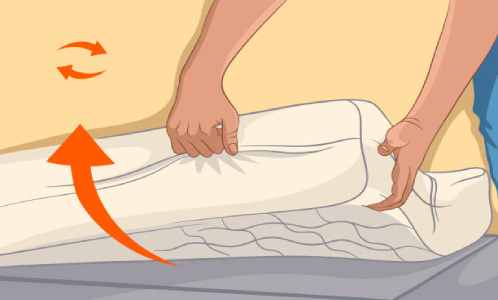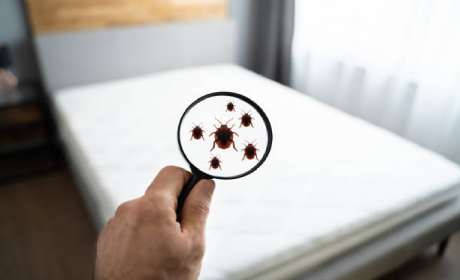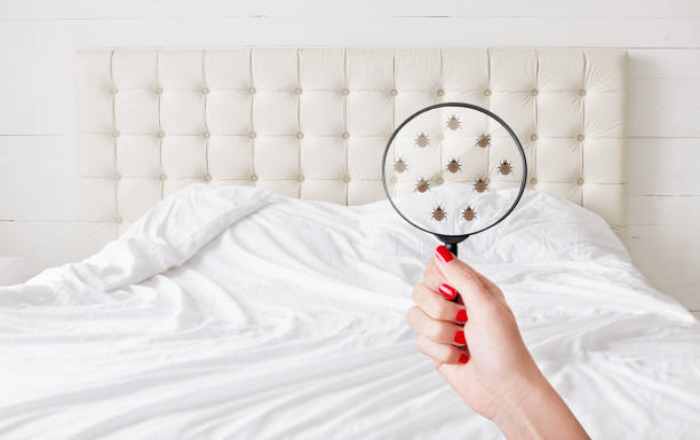How Do You Disinfect Bed Bugs?
Bed bugs are microscopic insects that cause itchy, red welts. They are most active at night and live in cracks, crevices, and creases.
Clearing clutter, vacuuming, and cleaning can help reduce the number of bed bugs and eggs in a room before treatment. Put all clothing, bedding and fabric items into garbage bags that are sealed and can be laundered in hot water.
Disinfect Your Mattress

Before you disinfect your mattress, check for signs of bed bugs. Look for dark spotting on the mattress, upholstered furniture or other surfaces that might indicate infestation. Also, keep in mind that these pests are great hitchhikers – they often ride around in the back of delivery trucks and are commonly found at yard sales and at hotel rooms.
Sticky traps can help you determine if you have a bed bug problem, but they won’t kill them. A better bed bug treatment is a thorough vacuuming of the whole mattress using a regular upright vacuum cleaner with an attachment for hard-to-reach crevices, Look at this website.
A non-chemical bed bug treatment is a food-grade powder called diatomaceous earth. It has an abrasive, dehydrating effect on the insects and can be used in place of spray pesticides. Just sprinkle a light layer of the powder around furniture, baseboards, walls, and other places where the bugs might hide. You can also use a bellows duster to spread the powder in areas that are difficult to reach with a sprayer.
Disinfect Your Bed Frame
Wooden bed frames should be cleaned regularly to avoid a build-up of dirt and mould that can damage the wood material. A general cleaning is best done with a soft, lint-free duster, but it’s also a good idea to wipe down hard-to-reach corners to remove any ingrained dirt. Do check the manufacturer’s care instructions before using any household cleaners on your wooden bed frame, especially since these may vary according to the type of wood and the bedroom environment.
If your bed frame is upholstered, you’ll need to use a fabric cleaner to eliminate sweat and grease that regular vacuuming and dusting won’t remove. Make sure to spot test your fabric cleaner before applying it to the entire upholstered bed to ensure that it won’t stain, bleach or discolour the material. For stains, mix hydrogen peroxide and salt to create a paste and apply it to the stained area. Let it dry before treating the stain again if needed.
Disinfect Your Bedding

In addition to providing a clean and comfortable sleeping environment, cleaning and disinfecting your bedding can help you sleep better. This is because clean and fresh sheets are free from germs, which helps promote good health. Besides, cleaning your bed can also help you get rid of pests that might be disturbing your sleep.
Once you’ve cleaned the bedspread, mattress and box spring, use a stiff coarse brush to remove any remaining faecal droppings, shells or eggs on the seams. Vacuum the whole bed, baseboards, headboard and footboard and then place the vacuum bag in a plastic bag before putting it in an external trash bin. Check behind furniture, in drawers, inside wall switches and outlets, etc for evidence of bed bugs and their eggs.
If you are sensitive to chemicals or don’t want to spray insecticide, there is another option: heat treatment. Large heaters are used to heat up rooms to a temperature that kills the pests and their eggs.
Disinfect Your Furniture
While hard surfaces like wooden furniture are a little easier to disinfect than porous surfaces like fabric couches, they still need regular cleaning and disinfecting. Using a disinfectant spray is the best way to kill viruses and germs on these often-touched surfaces in your home, as it can be done with just a few household ingredients.
Vinegar is a favourite of many cleaning experts, as it is safe, effective, and readily available at home. To disinfect a couch, start by removing any pillows or blankets and washing them (make sure to check the tags before washing, as some fabrics are not machine washable).
Summary:
Next, mix a solution of two parts rubbing alcohol to one part water in a spray bottle, and spritz over your couch. Be sure to test the solution on a small area first, as some fabrics are acid-sensitive, and if needed, add a few drops of eucalyptus oil to mask the vinegar scent.

